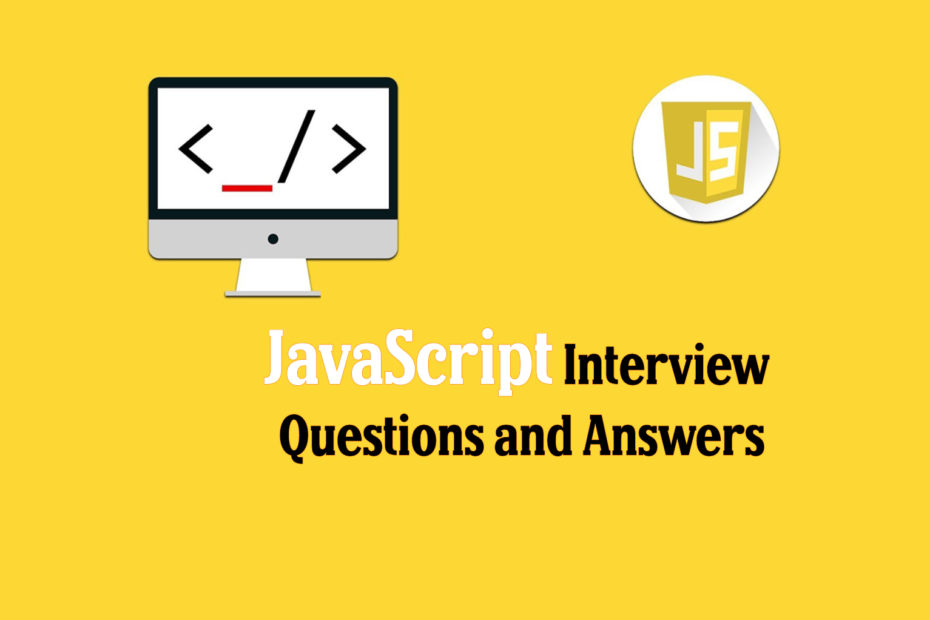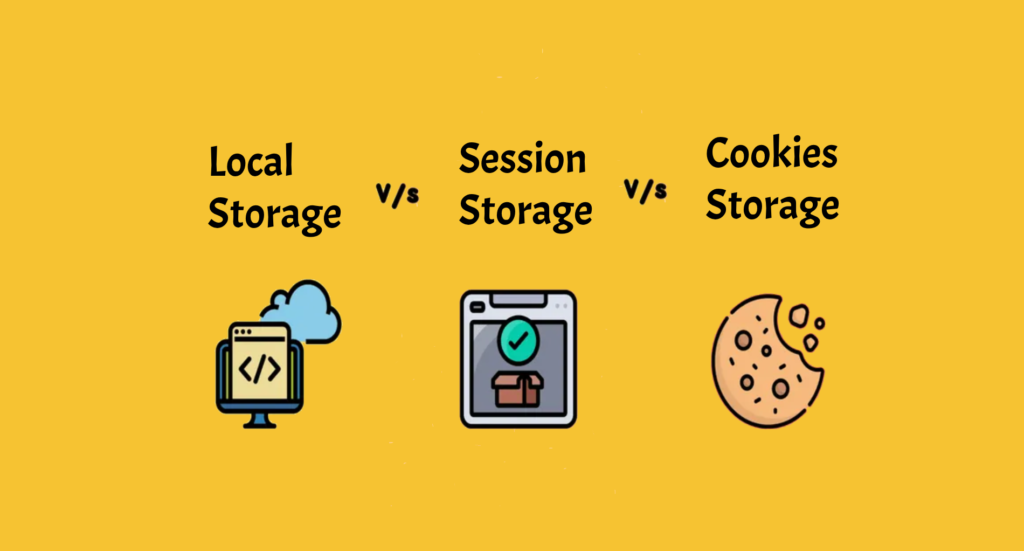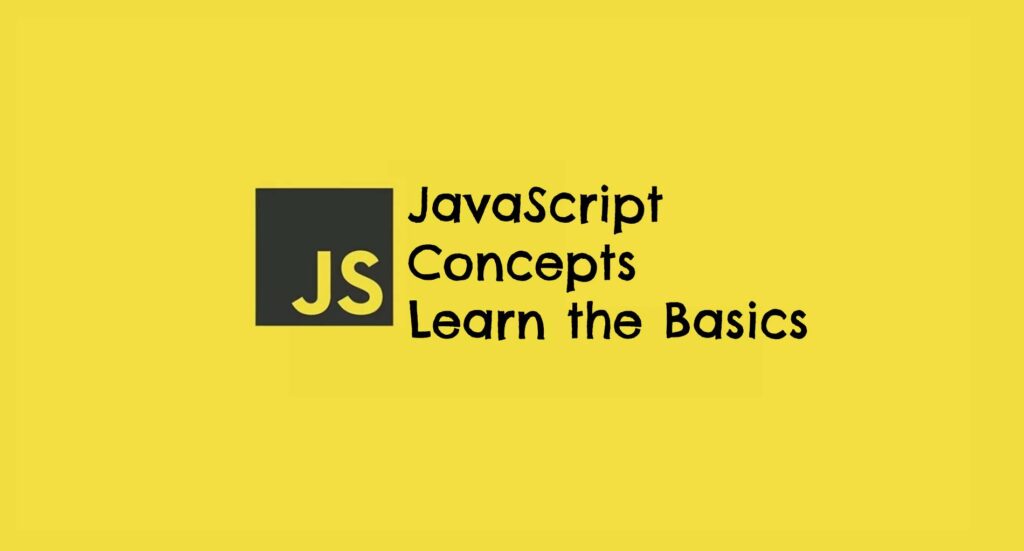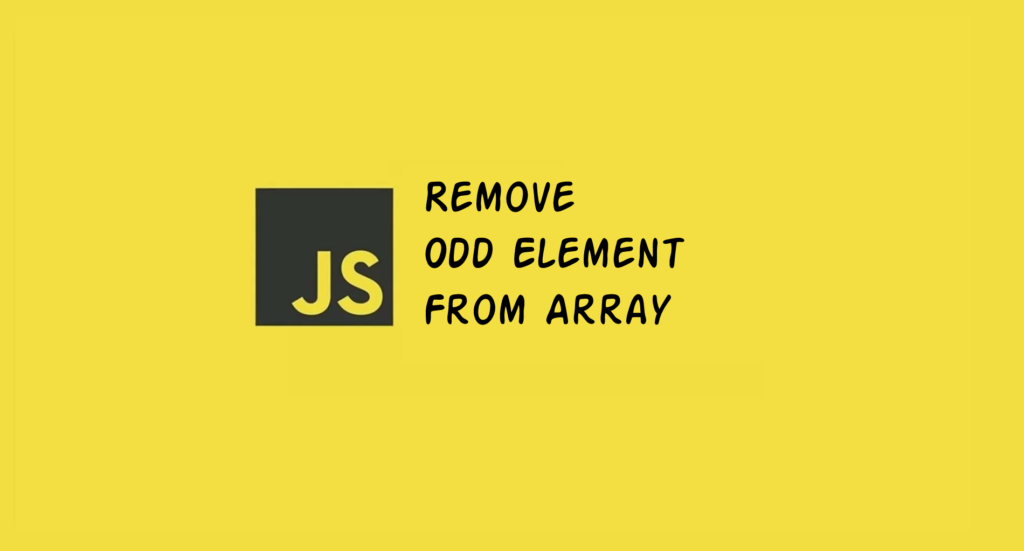Developed by Brendan Eich in 1995, JavaScript is one of the most widely used web development languages. It was originally developed to create dynamic websites. A script is a JS program that can be added to the HTML of any web page. When the page loads, these scripts will run automatically. Today most of the big companies use JavaScript like Google, Facebook, Wipro etc. So today we are sharing your best JavaScript interview questions and answers that will help you crack your tech round. So let’s start.
Q1. What are the data types supported by JavaScript?
Following are the data types available in javascript
- Undefined
- Null
- Boolean
- String
- Symbol
- Number
- Object
Q2. What are the features of JavaScript?
- It is a lightweight, interpreted programming language.
- It is designed for creating network-centric applications.
- It is complementary to and integrated with Java.
- It is an open and cross-platform scripting language.
Q3. Is JavaScript a case-sensitive language?
Yes, JavaScript is case sensitive. In this Language keywords, variables, function names, and other identifiers should always be case sensitive.
Q4. How can you create an object in JavaScript?
JavaScript supports Object concept very well. You can create an object using the object literal as follows
Example
var emp = {
name: "Sachin",
age: 35
};Q5. What is a names functions in JavaScript?
The function which has named at the time of definition is called a named function.
Example
function Welcome()
{
document.writeln("Named Function");
}
Welcome(); Q6. What is a anonymous function in JavaScript?
In this function which has no name. These functions are declared dynamically at runtime using the function operator in place of the function declaration. The function operator is greater bendy than a function declaration. It may be without difficulty used in the place of an expression.
Example
var Welcome=function()
{
alert("Anonymous Function is invoked");
}
display(); Q7. what isNaN in JavaScript?
isNaN means not a number in this function returns true if the argument is not a number; otherwise, it is false.
Example
isNaN("Hello") // Returns true
isNaN(345) // Returns false
isNaN('1') // Returns false, since '1' is converted to Number type which results in 0 ( a number)
isNaN(true) // Returns false, since true converted to Number type results in 1 ( a number)
isNaN(false) // Returns false
isNaN(undefined) // Returns trueQ8. Difference between “ == “ and “ === “ operators.
Both are comparison operators. The difference between both the operators is that “==” is used to compare values whereas, “ === “ is used to compare both values and types.
Example
var x = 2;
var y = "2";
(x == y) // Returns true since the value of both x and y is the same
(x === y) // Returns false since the typeof x is "number" and typeof y is "string"Q9. Difference between var and let keyword in JavaScript?
From the very beginning, the ‘var’ key-word changed into utilized in JavaScript programming while the key-word ‘let’ changed into simply brought in 2015.
The keyword ‘Var‘ has function scope. Anywhere in the function, the variable specified using var is accessible but in ‘let’ the scope of a variable declared with the ‘let‘ keyword is limited to the block in which it is declared. Let’s start with a Block Scope.
‘var‘ declares a variable that will be hoisted but ‘let’ declares a variable that will not be hoisted.
Q10. Explain Hoisting in JavaScript ?
Hoisting is the default behaviour of javascript where all the variable and function declarations are moved on top.
Example 1
a = 13;
console.log(a); // outputs 13 even when the variable is declared after it is initialized
var hoistedVariable;Example 2
// Hoisting takes place in the local scope as well
function printAge(){
x = 33;
console.log(x);
var x;
}
printAge(); // Outputs 33 since the local variable “x” is hoisted inside the local scopeQ11. What are undeclared and undefined variables?
Undeclared variables are the ones that don’t exist in a application and aren’t declared. If this system attempts to examine the fee of an undeclared variable, then a runtime mistakess is encountered.
Example
console.log(x); //Here error will come for x variable for undeclaredUndefined variables are those that are declared in the program but have not been given any value. If the program tries to read the value of an undefined variable, an undefined value is returned.
Example
var x;
console.log(x); //Here error will come for x variable for undefinedQ12. What is ‘this’ keyword in JavaScript?
‘this’ keyword refers to the object from where it was called.
Example
function welcome() {
console.log(this);
}
welcome();In the above example this refer to welcome function.
Q13. Explain call(), apply() and, bind() methods.
call(): It’s a predefined method in javascript. This method invokes a method (function) by specifying the owner object.
Example 1
function sayHello(){
return "Hello " + this.name;
}
var obj = {name: "DD Academy"};
sayHello.call(obj);
// Returns "Hello DD Academy" Example 2
var person = {
age: 30,
getAge: function(){
return this.age;
}
}
var person2 = {age: 54};
person.getAge.call(person2);
// Returns 84 apply() : This method same as call() method only difference is call() method takes arguments separately whereas, apply() method takes arguments as an array.
Example
function saySomething(message){
return this.name + " is " + message;
}
var person = {name: "DD Academy"};
saySomething.apply(person, ["awesome"]);Q14. What is the difference between exec () and test () methods in JavaScript?
- test () and exec () are RegExp expression methods used in javascript.
- We’ll use exec () to search a string for a specific pattern, and if it finds it, it’ll return the pattern directly; else, it’ll return an ’empty’ result.
- We will use a test () to find a string for a specific pattern. It will return the Boolean value ‘true’ on finding the given text otherwise, it will return ‘false’.
Q15. What are some advantages of using External JavaScript?
External JavaScript is the JavaScript Code (script) written in a separate record with the extension.js, after which we hyperlink that record in the or detail of the HTML record wherein the code is to be placed.
Some advantages of external javascript are
- It allows web designers and developers to collaborate on HTML and javascript files.
- We can reuse the code.
- Code readability is simple in external javascript.
Q16. What is the difference between ViewState and SessionState?
‘ViewState’ is specific to a page in a session.
‘SessionState’ is specific to user-specific data that can be accessed across all web application pages.
Q17. Does JavaScript support automatic type conversion?
Yes, JavaScript does support automatic type conversion. It is the common way of type conversion used by JavaScript developers
Q18. How to read and write a file using JavaScript?
There are two ways to read and write a file using JavaScript
- Using JavaScript extensions
- Using a web page and Active X objects
In JavaScript Extensions, you can use fo = fopen(getScriptPath(), 0); to open a file
Using ActiveX objects, following should be included in your code to read a file
var fso = new ActiveXObject("Scripting.FileSystemObject");
var s = fso.OpenTextFile("C:\\example.txt", 1, true);Q19. How to detect operating system on the client machine using JavaScript?
Using the navigator.appVersion or navigator.userAgent property we can detect the client operating system in JavaScript.
Example
var OSName="Unknown OS";
if (navigator.appVersion.indexOf("Win")!=-1) OSName="Windows";
if (navigator.appVersion.indexOf("Mac")!=-1) OSName="MacOS";
if (navigator.appVersion.indexOf("X11")!=-1) OSName="UNIX";
if (navigator.appVersion.indexOf("Linux")!=-1) OSName="Linux";
// Display the OS name
document.getElementById("OS").innerHTML = OSName;Q20. What do you mean by NULL in JavaScript?
The NULL value is used to represent no value or no object. It implies no object or null string, no valid boolean value, no number, and no array object.
Q21. What is DOM? What is the use of document object?
DOM stands for Document Object Model. A document object represents the HTML document. It can be used to access and change the content of HTML.
Q22. What is the use of window object?
The window object is created automatically by the browser that represents a window of a browser. It is not an object of JavaScript. It is a browser object.
Below are some window object we used at a time of development.
- prompt() displays a dialog box to get input from the user.
- open() opens the new window.
- close() closes the current window.
- setTimeout() performs the action after specified time like calling function, evaluating expressions.
Q22. What is the use of history object?
The history object of a browser can be used to switch to history pages such as back and forward from the current page or another page. There are three methods of history object.
- history.back() – It loads the previous page.
- history.forward() – It loads the next page.
- history.go(number) – The number may be positive for forward, negative for backward. It loads the given page number.
Q23. How to write HTML code dynamically using JavaScript?
The innerHTML property is used to write the HTML code using JavaScript dynamically.
Example
document.getElementById('location').innerHTML="<h2>This is heading using JavaScript</h2>"; Q24. Difference between Client side JavaScript and Server side JavaScript?
Client-side JavaScript contains the primary language and predefined items which might be applicable to running JavaScript in a browser. The client-side JavaScript is embedded without delay via way of means of in the HTML pages. The browser translates this script at runtime.
Server-side JavaScript additionally resembles client-side JavaScript. It has a applicable JavaScript that’s to run in a server. The server-side JavaScript are deployed only after compilation.
Q25. What’s the difference between event.preventDefault() and event.stopPropagation() methods in JavaScript?
In JavaScript, the event.preventDefault() method is used to prevent the default behavior of an element.
For example: If you use it in a form element, it prevents it from submitting. If used in an anchor element, it prevents it from navigating. If used in a contextmenu, it prevents it from showing or displaying.
On the other hand, the event.stopPropagation() method is used to stop the propagation of an event or stop the event from occurring in the bubbling or capturing phase.
Q26. What is negative infinity?
Negative Infinity is a number in JavaScript which can be derived by dividing the negative number by zero.
Example
var num=-500;
function display()
{
document.writeln(num/0);
}
display();
//expected output: -Infinity Q27. How to submit a form using JavaScript by clicking a link?
Let’s see the below JavaScript code to submit the form by clicking the link.
Example
<form name="submitForm" action="index.php">
Search: <input type='text' name='search' />
<a href="javascript: fncSubmitForm()">Search</a>
</form>
<script type="text/javascript">
function fncSubmitForm()
{
document.submitForm.submit();
}
</script> Q28. What is the requirement of debugging in JavaScript?
JavaScript did not display any error message in a browser. However, those errors can have an effect on the output. The satisfactory exercise to discover the mistake is to debug the code. The code may be debugged effortlessly through the usage of internet browsers like Google Chrome, Mozilla Firebox.
To perform debugging, we can use any of the following approaches:
Using console.log() method
Using debugger keyword
Q29. What is the use of debugger keyword in JavaScript?
JavaScript debugger keyword sets the breakpoint through the code itself. The debugger stops the execution of the program at the position it is applied. Now, we can start the flow of execution manually. If an exception occurs, the execution will stop again on that particular line.
Example
function display(){
x = 10;
y = 15;
z = x + y;
debugger;
document.write(z);
document.write(a);
}
display();
Q30. What is the role of a strict mode in JavaScript?
The JavaScript strict mode is used to generates silent errors. It provides “use strict”; expression to enable the strict mode. This expression can only be placed as the first statement in a script or a function.
Example
"use strict";
x=10;
console.log(x);Q31. What is closure in JavaScript?
JavaScript variables can belong to the local or global scope. As per official following is the defination.
A closure is the combination of a function bundled together (enclosed) with references to its surrounding state (the lexical environment). In other words, a closure gives you access to an outer function’s scope from an inner function. In JavaScript, closures are created every time a function is created, at function creation time.
Example
function init() {
var name = 'developerdiary'; // name is a local variable created by init
function displayName() {
// displayName() is the inner function, a closure
console.log(name); // use variable declared in the parent function
}
displayName();
}
init();init() creates a local variable called name and a function called displayName(). The displayName() function is an inner function that is defined inside init() and is available only within the body of the init() function. Note that the displayName() function has no local variables of its own. However, since inner functions have access to the variables of outer functions, displayName() can access the variable name declared in the parent function, init().
Q32. What is event loop in JavaScript?
JavaScript is a single-threaded synchronous programming language. It means that the main thread where JavaScript code is run, runs in one line at a time manner and there is no possibility of running code in parallel.
Example
console.log("Before delay");
function delayBySeconds(sec) {
let start = now = Date.now()
while(now-start < (sec*1000)) {
now = Date.now();
}
}
delayBySeconds(15);
console.log("After delay");
Output
Before delay
(... waits for 15 seconds)
After delay
More Interview Questions
PHP OOPS Interview Questions And Answers (2022)
Latest MySQL Interview Questions And Answers
Laravel Interview Questions And Answers
PHP Interview Questions And Answers
Conclusion
I believe that these JavaScript interview questions and answers would help you understand what kind of questions may be asked to you in an interview, and by going through these JavaScript interview questions, you can prepare and crack your next interview in one go. And I will try to update interview questions and answers here more. So you can get more into it.






